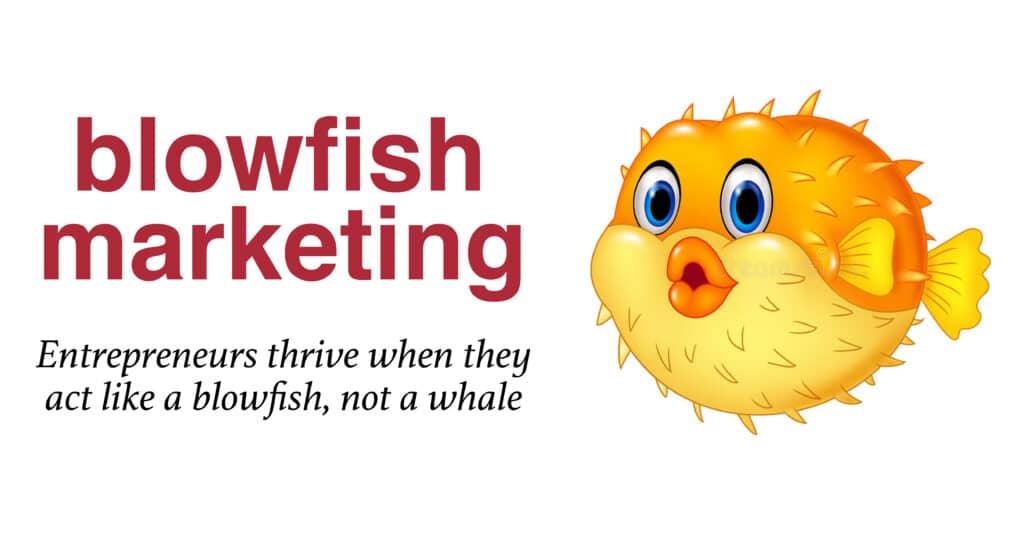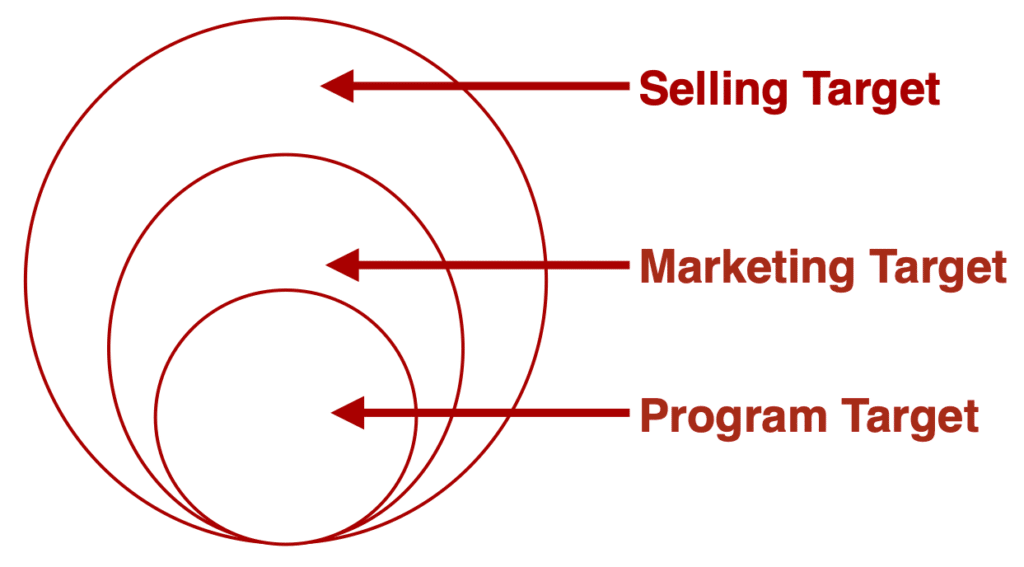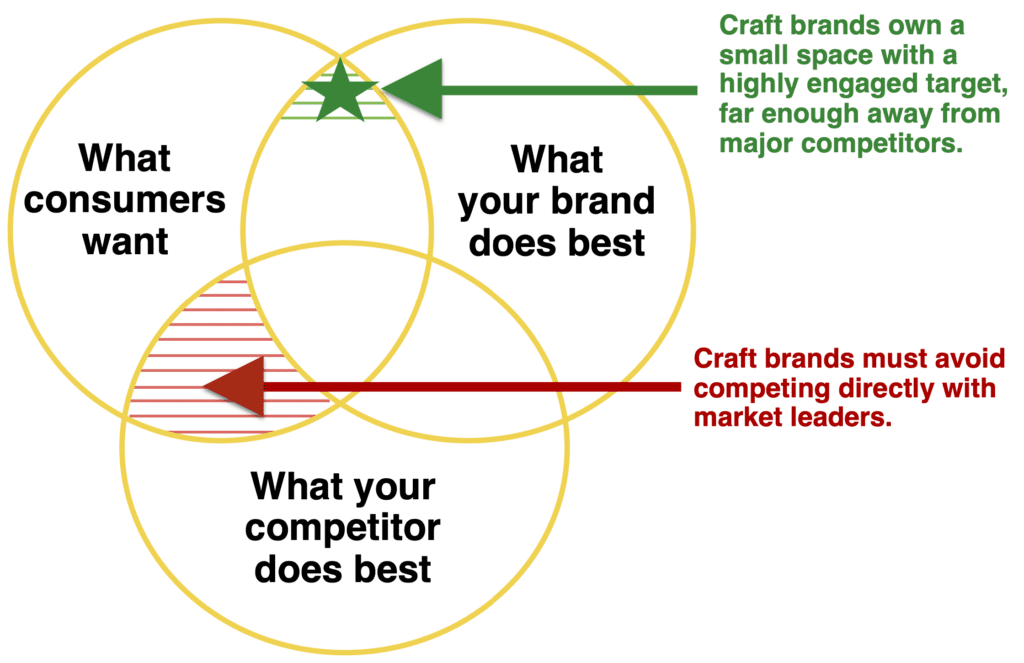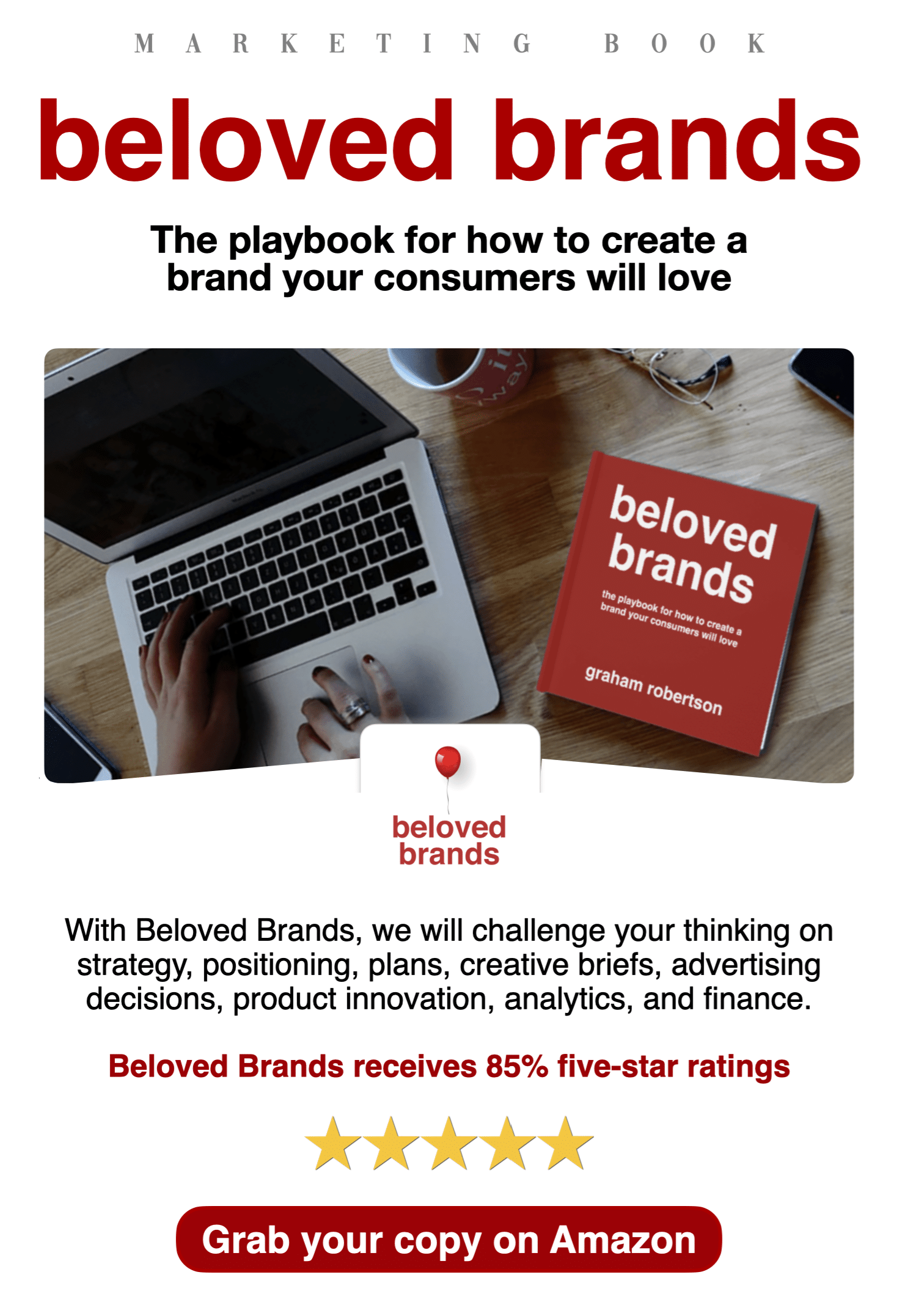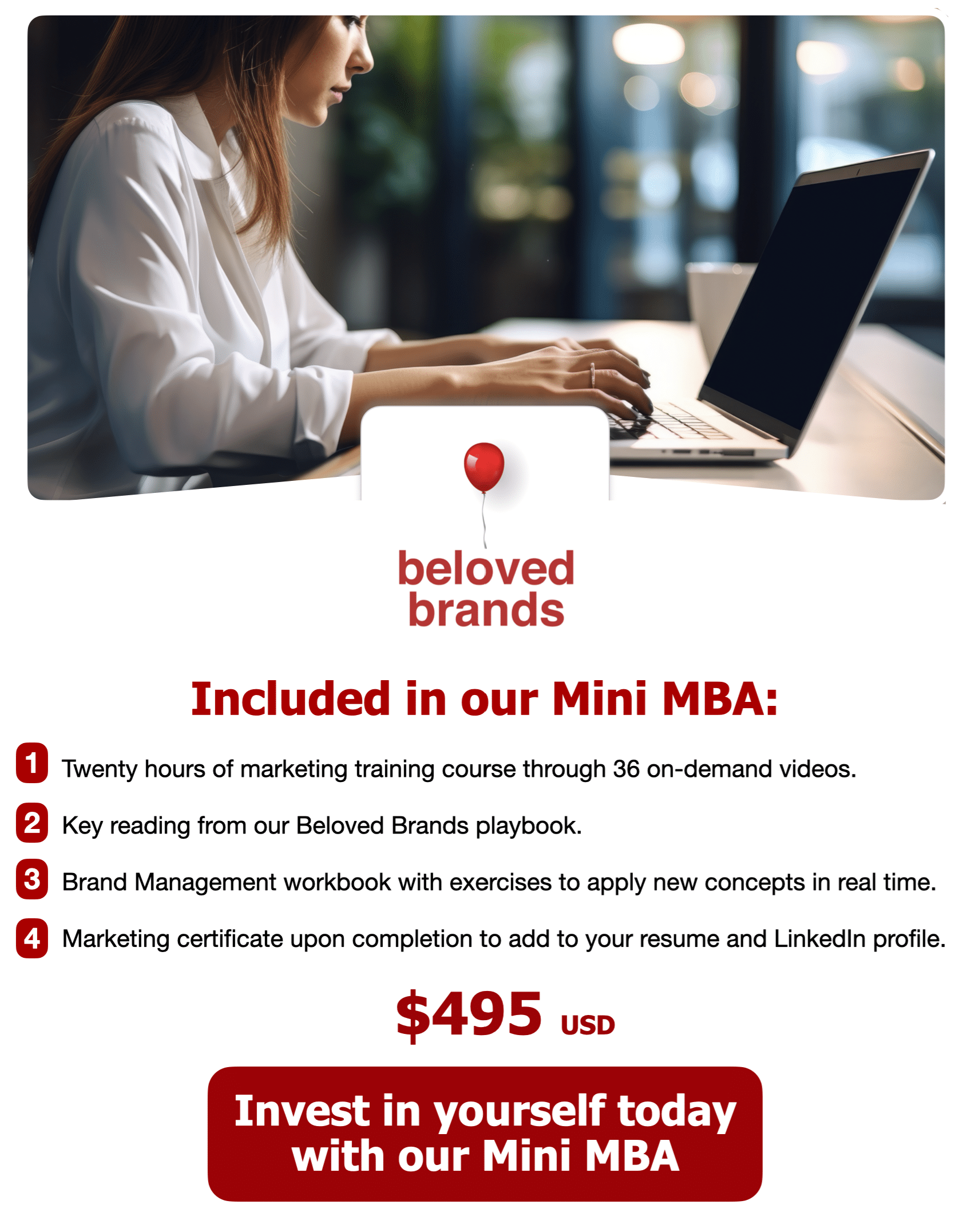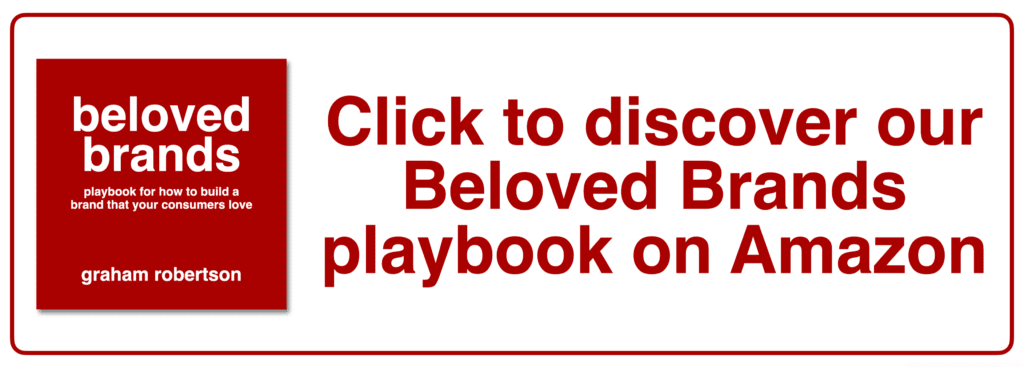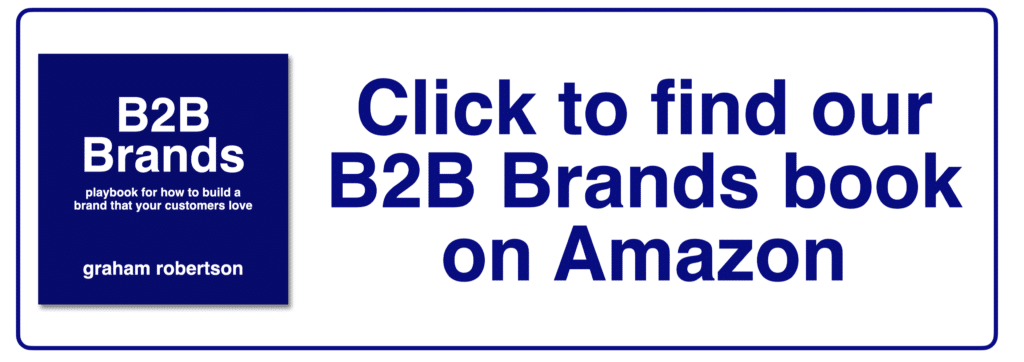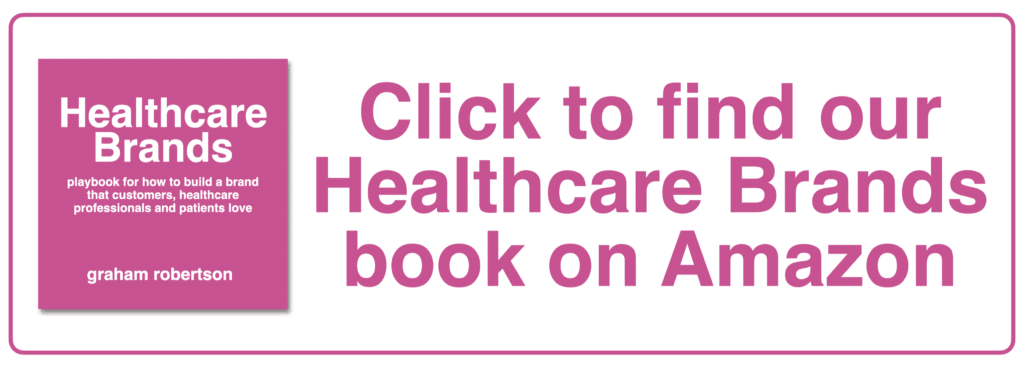Blowfish Marketing uses a focused target market, focused brand message, focused strategy, and activities to those you know will drive your brand’s growth.
A blowfish marketing strategy makes you seem bigger than you are. For start-ups or smaller niche players, you need to look like a real player to be noticed and purchased. Blowfish Marketing takes your entire marketing budget and puts it against one target market who you know you can move. You have to talk about one simple message you know will be the most motivating to your target.
Choose to do far fewer activities so each activity has enough resources to be meaningful. Put all of your money behind one media choice, one geography, one channel that you know will drive your strategy. To those who see and engage your brand, they will think you are much bigger than you really are. No matter how much money you have, challenge yourself to think and act like a blowfish.
Blowfish marketing
- Use a tight target market you know will respond
- Focus on a tight brand message you know will engage and move consumers
- Make sure your strategy focuses on a specific outcome
- Limit the activities to those you know will work
- Focus on a short timing window, specific media choices, and specific retail channels.
Focus
Many marketers struggle to focus
The most prominent myth is your brand will get bigger if you have a broader target market.
The reality is too many marketers target anyone. I will always argue it is better to be loved by a few than tolerated by many. Create a tight bond with a core base of brand fans. Then use that fan support to expand your following.
The second myth to becoming a more prominent brand is to believe a brand stands for everything. Some brands try to say everything possible with the hope the consumer hears anything.
The reality is that hope is never a strategy. To be loved by consumers, a brand must stand for something with a backbone and conviction. Trying to be everything to anyone just ends up becoming nothing to everyone.
The third myth is that your brand will be bigger if you try to be everywhere. Whether that means you are in every sales channel or on every possible media option.
The reality is the worst marketers lack focus because they fear missing out on someone or something. By trying to be everywhere, the brand will drain itself and eventually end up being nowhere. If you went to Las Vegas and put a chip on every square, you would be bankrupt before midnight.
Every brand has limited resources, whether they’re financial, time, people, or partnerships. Marketers always face the temptation of an unlimited array of choices. Those choices show up with the possible target market, brand messages, strategies, or tactics. The smartest brand leaders use blowfish marketing to limit their choices to match up to their limited resources. They focus on those choices that will deliver the highest return.
Target Market
One of the biggest mistakes I see marketers make is picking too broad of a target market. A tight target market decides who is in the target and who is not in the target.
Scared marketers target “everyone.” There seems to be an irrational fear of leaving someone out. Spreading your brand’s limited resources across an entire population is completely cost-prohibitive. Targeting everyone “just in case” might feel safe at first. However, it is riskier because you spread your resources so broadly you never see the full impact you want to see. This fear of missing out (FOMO) gives your brand a lower return on investment. Eventually, you will drain your brand’s limited resources. Please focus.
Every time I go to the airport, I see the shoeshine person looking down at people’s feet. They are qualifying potential customers based on whether they are wearing leather shoes. It reminds me how simple it is to target those consumers who are the most motivated by what you do. Sure, they could be missing out on the very few people who have leather shoes in their suitcases. However, using a focused approach to profile consumers is a smart way to maximize your return on effort.
If shoeshiners can narrow the focus of their target to people wearing leather shoes, why is it so difficult for you to narrow down your target to those who care the most about what your brand does?
Instead of going after who you want, blowfish marketing goes after those who want you
If you have a golf ball that goes longer than any other golf ball, go after those golfers who already hit it long and want to hit it even longer. If you have a new recipe for chicken noodle soup, go after those who love chicken noodle soup. And if you are selling a mortgage, go after those consumers who want to buy a house. Damn, that sounds simple. Then why do I see golf marketers go after people who hate golf, soup marketers go after those who don’t give a damn about soup, and banks trying to sell mortgages to everyone?
To illustrate this point of focus, I look at three types of potential target markets:
Selling target:
This is pretty much everyone, as you sell to anyone who comes in the door and wants to buy, regardless if they fit your ideal target. However, “everyone” should never be a marketing target. You are spreading your resources so thin your message will miss out on really capturing those consumers most likely to respond, which provides an efficient payback.
Marketing target:
You should focus your limited resources on those consumers who have the highest likelihood of responding positively to your brand positioning, advertising, and new product innovation. A tighter target market provides the fastest and highest return on investment.
Program target:
When working on a specific campaign, narrow the target even further. Focus on people you want to stimulate to see if you can get them to see, think, feel or do things that will benefit your brand. A specific program target is smart when launching a new product or aligning with a promotional time of year (including back-to-school or Christmas).
Craft brands build themselves behind a micro-benefit, including gluten-free, low-fat, locally grown, organic, or ethically sourced. These craft brands take an antagonistic approach to the rest of the category, portraying every other brand as old-school, overly corporate, unethical, and flawed in manufacturing or using ingredients. These brands often take a very aggressive marketing stance, calling out the other brands as unethical or stupid. Craft brands believe it is better to be loved by the few than liked or tolerated by many.
Examples of craft brands
Five Guys
A fantastic example of a craft brand is Five Guys Burgers, which uses fresh, high-quality beef and a commitment to begin cooking your burger when you order it. The portions are more substantial than typical fast food, and they charge super-premium prices. Five Guys has gone in the opposite direction to most fast-food restaurants, whose meals seem frozen and microwaved. Five Guys has expanded rapidly with word of mouth, helping the brand earn a reputation as “the best burger.” Now that Five Guys has become a global brand, McDonald’s has to figure out an adequate competitive response.
Dollar Shave Club
Another excellent example of a craft brand is Dollar Shave, which launched as an online subscription model for razor blades. Dollar Shave uses smart sourcing and a direct-to-consumer distribution model. This efficient model eliminates costs and allows the brand to sell razors at a fraction of the cost you pay for Gillette. For consumers, the price of razor blades has gotten out of control, no matter how much innovation the leaders try to portray. Dollar Shave’s advertising openly mocked Gillette, yet it started in such a small niche, so Gillette ignored them. While year one sales were only $30 million, without a competitive response from Gillette, Dollar Shave continued to grow year by year, until Unilever recently purchased the brand for $1 billion.
Brand Plan
Write a focused brand plan with the power of threes
I believe in “the power of threes.” As I said earlier, your brand plan should help you make decisions on where to focus and allocate your limited resources.
As a guideline, for an annual plan, I recommend you focus on the top three strategies, then focus on the top three tactics for each strategy. That means nine significant projects for your brand to focus your limited resources on during the year. Compare the subtle difference with what happens when you try to do five strategies with five tactics: the plan quickly explodes into 25 projects. That would cripple your brand’s limited resources. What if you never get to the twenty-fifth project but it was the most important project? With fewer projects, you will be able to execute everything with full passion and brilliance.
I see too many marketers with a long list of things they need to do. They are so busy; they have no time to think about what matters to their brand. What ends up happening is they have very little passion for any one particular project; they’re just trying to get everything done. This thinking is not the ideal behavior a brand needs to become a beloved brand.
Blowfish Marketing focuses your activities
The principles of focus mean you have to limit the execution ideas to those that will best match your brand’s limited resources.
Here is a tool that will allow you to assess the potential return on effort (ROE) for possible marketing activities. I call it the “big easy” execution decision-making grid.
Take each execution plan and hold a creative brainstorm. Put each tactical idea on a Post-It note. Then plot the ideas onto the grid as to whether the idea will have a big impact versus small impact on your business results, and whether the idea will be easy to execute versus difficult to execute.
The top ideas rise to the big easy quadrant in the top-right corner. The goal of this tool is to narrow down your focus to the best three activities for each plan while eliminating those ideas that are potential resource drains. While you may not always have access to the data to find the ROI before launching a program, you should be able to use your instincts and judgment to assess ROE.
Media plans
Blowfish Marketing makes focused media choices
There is a term called zero-based marketing budgeting, which starts off each new year assuming all brand budgets are zero and the brand must prove its case to earn its budget level. While it makes perfect sense in theory, with 20 years of experience with marketing budgets, this is not an easy concept to implement. One risk I see is that a zero-based budget could lead to short-term and highly transactional advertising.
A brand needs to balance brand-building activities, which add to the long-term connection with consumers with transactional call-to-action messaging intended to trigger purchases. For instance, if you tell me “Buy two, get one free” for five straight years, your consumers will eventually forget why they should buy your product at all, let alone two. There is a degree of uncertainty in making investment decisions. Get comfortable with your instincts to balance the degree of ambiguity to make the smart decision.
When you feel the risk/reward of the media investment is unknown, it might be wise to start with a smaller investment level. Use what I call a “blowfish” media plan so that, among those you target, you appear to be a large brand. Pick a tight target market with a limited media choice or geographic focus to replicate how a more substantial media investment would appear. When the unknown is very high, get smarter by using test markets with various media spend levels to gain the necessary consumer response data before you make a full investment.
When you use Blowfish Marketing to focus, five amazing things happen to your brand:
- Stronger return on investment (ROI): When you focus your dollars on the distinct breakthrough point or against a program that you know will work, you will see the most positive and efficient response in the marketplace.
- Better return on effort (ROE): You must make the most efficient use of your limited people resources. Find the Big Easy! Focus on the ideas with the most significant impact that is the easiest to execute. Avoid those ideas that are small and difficult to implement. While you may not always have the data to calculate your ROI, you should have the instincts to figure out your ROE.
- Stronger reputation: When you limit your audience and brand message, you will have a better chance to own that reputation among that core target audience.
- More competitive: When you focus your message on a specific target audience, your brand will start to create a space in the market you can defend against others from entering that space.
- More investment behind the brand: When you focus and deliver business results, your management team will ask you to do that again. They will give you more money and more people resources. Even with increased resources, you must take the same focused approach.


